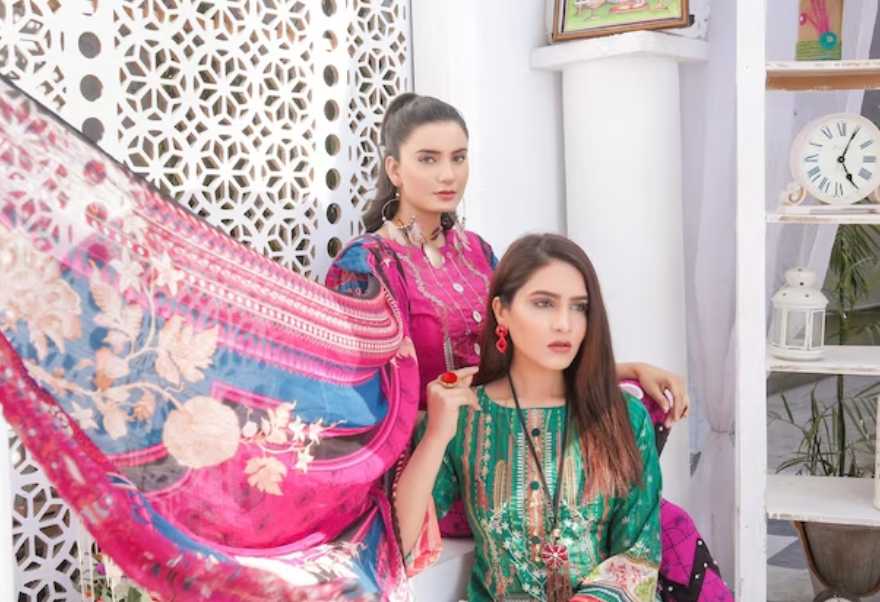The land of Bengal is the fertile house of history, culture and craftsmanship. Bengali traditional handloom jamdani sarees are so light as if they are “the woven air’. Jamdani culture has been ruling the Bengali royalty’s garment choice for centuries. Every rural lane of old Bengal sings the tales of tradition, skill and divine elegance of women wearing Jamdani sarees.
A Dance of Threads: Origins of Jamdani
Jamdani sarees originated around the Mughal rule in Bengal. Back then, the artisans used to weave detailed patterns with their hands! It was a time-consuming process, but the results were unparalleled. Etymologically, the word ‘Jamdani’ has a Persian influence. ‘Jam’ means flower, and ‘Dani’ means vase; thus, Jamdani might mean flower vase. Their geometric motifs and unique textures characterize these sarees.
Crafting Elegance: The Art of Jamdani Weaving
Jamdani sarees are seen in a different light due to their ornamental weaving techniques. The fabrics are delicately handwoven patiently. Several beautiful motifs can be drawn into the sarees only when the weavers intensely understand Jamdani weaving.
Threads of Royalty: Jamdani in Bengal’s Noble History
Jamdani is a royal beauty of its own. Kings and queens used to wear these to show their regality! Since the kingly days, these sarees have been associated with being the epitome of sophistication and aristocracy. It’s awesome that in the modern world, the beauty of a Jamdani has transcended every hierarchical barrier and has reached every common person.
Devotion in Threads: Jamdani as Religious Attire
Jamdani is more than just a saree in Bengal. They enter almost every cultural ceremony in Bengal and its neighbourhood states. May it be the first rice ceremony (mukhe bhaat) of a child or the last rice ceremony as a spinster of a bride (tiburon bhaat) Jamdani sarees fit in almost everywhere. It embodies new beginnings. With every ending is a new beginning. Every divine celebration that calls for traditional attire clad in a holy grace. For the longest time, Jamdani sarees are considered auspicious.
Reviving Tradition: The Contemporary Resurgence of Jamdani
Lately, the world has seen a resurgence in showcasing the brilliance of Jamdani sarees online by their artisans at art fairs and global cultural summits. New-age designers are blending the traditional charm with modern ways of production to provide the Jamdani aesthetic to the masses on a larger scale. The ancient drape thus continues to thrive. However, the ways of donning it have changed.
Global Appeal: Jamdani on the International Stage
Who says Jamdani is limited to Bengal? It has transcended every possible geographical boundary. After crossing the continental limits, it has reached UNESCO. Jamdani sarees are highly sought after in several fashion fairs — Asia and beyond!
Bangladesh has been highly catalytic in upholding the heritage of the Jamdani sarees globally. In 2013, the Jamdani saree was included in the Representative List of the Intangible Cultural Heritage of Humanity of Unesco.
Preserving Legacy: Challenges and Initiatives
Jamdani sarees online never go out of fashion!! That’s the ultimate thing. However, with modernization, newer ways of marketing, different dynamics, and competition all around from mass production houses — art is diverging itself into newer dimensions. Several initiatives and campaigns have been put to work for better awareness around the artisans, cooperatives and support systems provided by the government. Everything is done solely for cultural preservation purposes
Lastly, this Bengali saree has stood the test of time and endured the legacy of every craftsman who has perfected the crafted Jamdani making with utmost love and care. The sight of a Jamdani saree in an ‘attorney’ drape is the ultimate epitome of Bengali beauty and grace adorned on the wearer.



